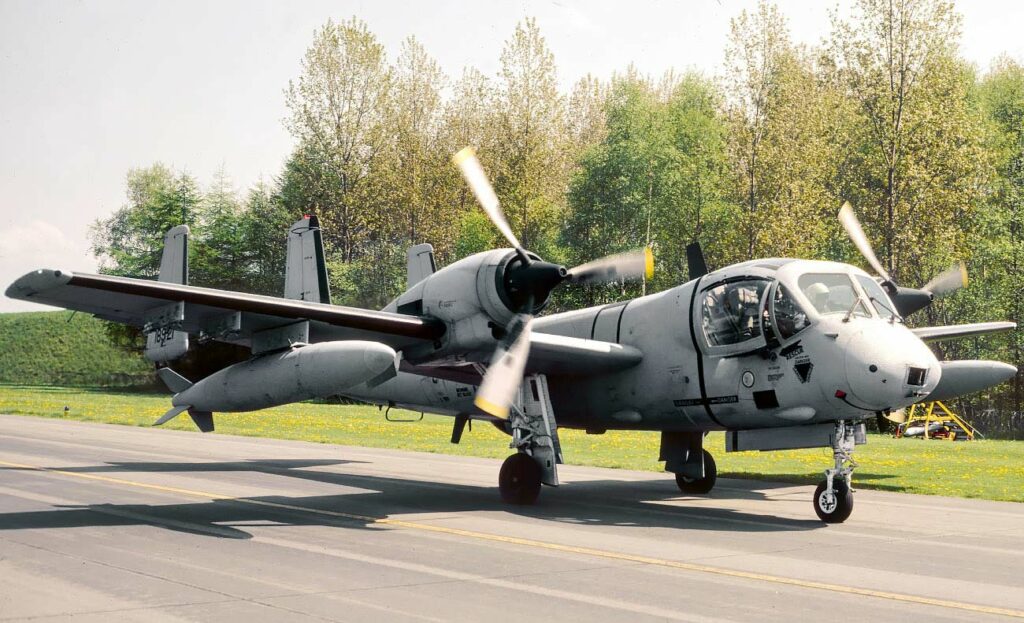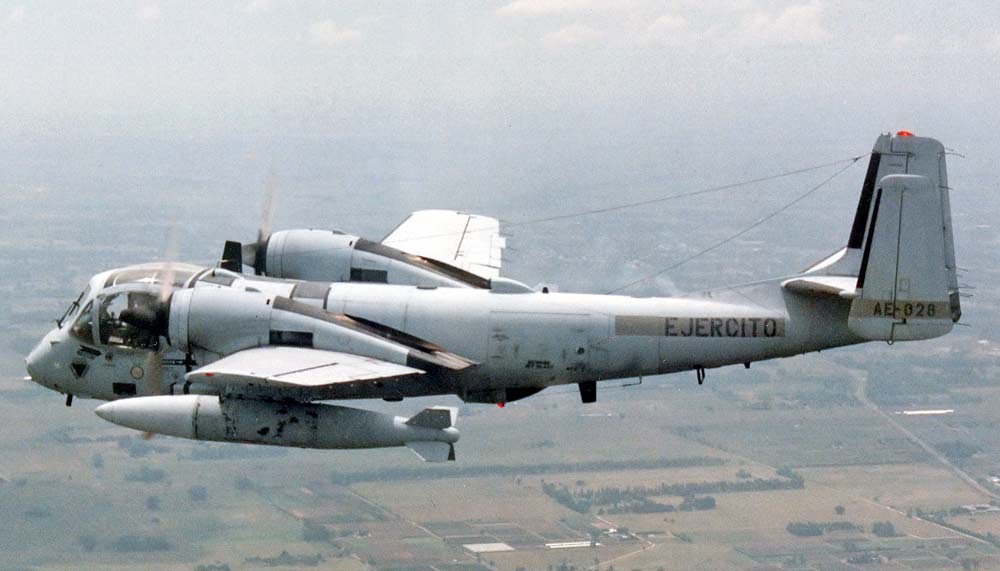Technical and Identification Summary: Versatile, twin-engine turboprop reconnaissance and battlefield surveillance aircraft used by the U.S. Army.
In brief
The Grumman OV-1 Mohawk is a robust, twin-engine turboprop aircraft developed in the late 1950s for battlefield surveillance, reconnaissance, and light strike missions. It features a unique silhouette with a high-wing, twin tail configuration, and a glider-like fuselage designed for short takeoff and landing (STOL) capabilities. Equipped with state-of-the-art sensors for its time, including side-looking airborne radar (SLAR) and forward-looking infrared (FLIR), the Mohawk was adept at operating from unprepared runways close to front lines to gather intelligence. It served primarily with the U.S. Army, showcasing exceptional durability and versatility across varied operational theaters.

The development of the Grumman OV-1 Mohawk was a response to the U.S. Army’s requirement for a dedicated observation and light attack aircraft to replace older models that were deemed inadequate for modern battlefield conditions. The advent of the Cold War and the increasing complexity of armed conflicts necessitated an aircraft capable of performing both day and night under all weather conditions. Grumman’s proposal was selected, and the OV-1 program was launched, with the first flight occurring in April 1959. The Mohawk was designed to fulfill multiple roles, including aerial reconnaissance, electronic warfare, and light strike missions, significantly enhancing the Army’s capability to collect real-time intelligence and conduct battlefield management.
Design
The OV-1 Mohawk’s design is distinguished by its high-wing configuration, which provided excellent visibility for the crew and allowed for the installation of large observation windows and sophisticated sensors. The aircraft was powered by twin turboprop engines, which contributed to its STOL capabilities, allowing it to operate from short and unprepared runways near the front lines. The Mohawk’s fuselage was designed to accommodate a variety of payloads, including photographic cameras, infrared detectors, and radar systems, making it one of the first aircraft to integrate such advanced technology for tactical reconnaissance missions. Its rugged design enabled operations in harsh environments, although its complexity and specialized equipment led to higher maintenance demands.
Performance
Powered by two turboprop engines, the OV-1 Mohawk was capable of reaching speeds up to 300 mph (about 480 km/h) with a service ceiling of 25,000 feet (about 7,620 meters) and a range of approximately 1,000 miles (about 1,600 kilometers). These performance characteristics allowed the Mohawk to quickly transit between bases and operational areas, conduct extended surveillance missions, and evade enemy air defenses. Its STOL capabilities were particularly valuable in conflict zones where conventional runways were often unavailable. While not the fastest or highest-flying reconnaissance aircraft of its era, the Mohawk’s versatility and ability to carry a wide range of sensor payloads made it a valuable asset for battlefield intelligence gathering.
Variants
Several variants of the OV-1 Mohawk were developed to enhance its capabilities and adapt to evolving military requirements:
- OV-1A: The initial production model equipped with basic reconnaissance equipment.
- OV-1B: Introduced side-looking airborne radar (SLAR) for all-weather surveillance.
- OV-1C: Featured upgraded cameras and infrared sensors for improved night operation.
- OV-1D: The most advanced version, incorporating modernized avionics, sensors, and improved performance characteristics.

Military Use and Combat
The Grumman OV-1 Mohawk saw extensive service in various conflicts, most notably during the Vietnam War, where it was employed for visual and electronic reconnaissance over contested areas. Its ability to gather and relay battlefield intelligence in real-time was invaluable for planning and executing military operations. Mohawks were also used for border surveillance in Europe during the Cold War and participated in other conflicts, providing critical intelligence that shaped military strategies. Despite facing competition from emerging technologies like unmanned aerial vehicles (UAVs), the Mohawk’s manned reconnaissance missions offered irreplaceable situational awareness and flexibility.
The Grumman OV-1 Mohawk exemplifies the critical role of reconnaissance and surveillance aircraft in modern warfare. Its innovative design, advanced sensor payloads, and versatility across a range of missions underscored the importance of real-time intelligence in military operations. While eventually replaced by newer technologies and platforms, the Mohawk’s legacy endures as a testament to the evolution of aerial reconnaissance and the enduring value of human-operated surveillance systems in conflict zones.
Back to the Spy Planes section.